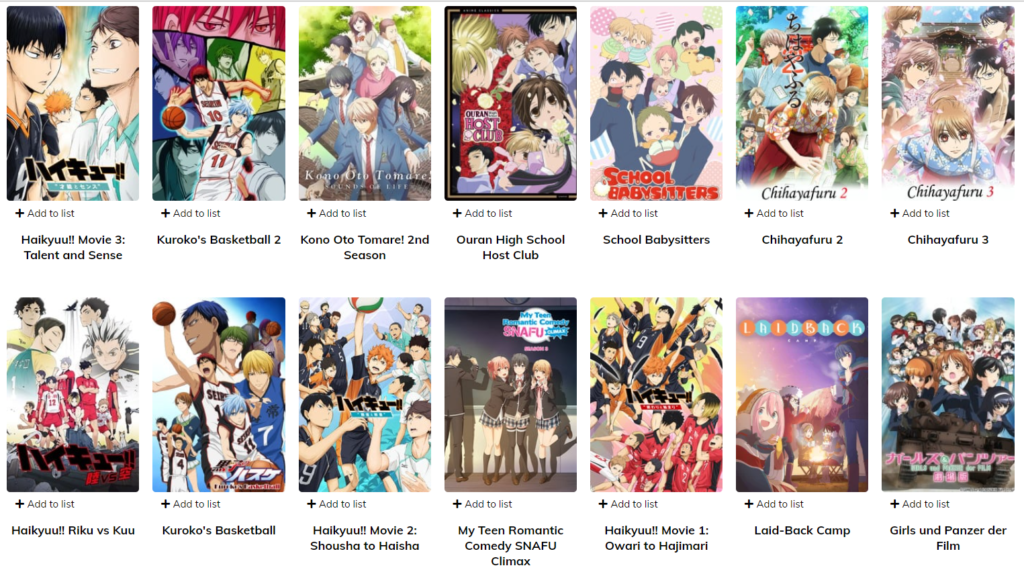I know a fair amount about anime, and a little bit about dating sims. Don’t ask me why, that’s not important. What is important is that Team Salvato does something special simply by allowing the main girls to express themselves artistically, through poetry. DDLC asks the player to engage in diegetic media analysis and criticism, essentially forcing them to confront their own biases and question all of the media that lead them to judge the girls based on tropes.
High school is an extremely common setting for anime, and a key component of that setting is the club, a grouping trope that dating sims have adopted. The specific club that the author focuses on often narrows the genre of the story: sports clubs make a sports anime (Haikyuu, Kuroko’s Basketball), camping clubs make a camping anime (Laid-back Camp), and art clubs make an… art anime? How does that work?

In the setting of an art/media creation club, the act of creation is often sidelined. Sometimes it is ignored completely, occasionally it is occasionally spotlit (K-On), and very rarely does it play into the entire package of a show, with the best example of the latter being Keep Your Hands Off Eizouken, a high-school show solely about anime creation, with few other shenanigans. Even in a show as comprehensive as Eizouken, media creation is a group activity, and does not tackle very complex themes or say much about the inner workings of the show’s characters, the creators themselves.
Doki Doki Literature Club shows us the poetry of all four girls, and asks the player to engage in the act of criticism. The girls’ poems all, with some digging, reveal the psychologies that lie beneath their tropified external personalities, which then asks the player to examine their own biases and assumptions about the media they have consumed up to that point and the very game they are playing at that moment.
As an example, let’s look at Yuri’s second poem, “The Raccoon.”

This poem uses “slicing bread” as a metaphor for self-harm, and the raccoon as the desire to continue. Perhaps the most obvious hint towards this is the reference to a “rush of blood” in the last line. While the player up to this point might see Yuri as a shy “kuudere” type that they might want to date, by presenting this poem and asking the player to interpret and critique it the developer forces the player to consider who Yuri really is, beyond her stock character tropes. Why is she the way that she presents?
Sayori and Natsuki’s second poems ask for this same (if basic) analytic work of the player to unpack and psychoanalyze the girls. Sayori’s “Bottles” is clearly about her tendency to keep up a cheery “genki girl” attitude to mediate between her friends, even while she feels empty inside. Natsuki’s “Amy Likes Spiders” could be read as a take on how one bad trait (such as abuse) can ruin a person’s otherwise good personality (such as her father).
This act of critique being incorporated into DDLC breaks the tendency for anime and games to shy away from diegetic artistic expression, creating an uncomfortable meta effect. In reading these poems, we are confronted with our biases about who the girls are beyond their tropified characteristics, and we are forced to reconsider the deluge of media that has conditioned us to grow those biases. For all the meta-media commentary that DDLC espouses, I found simply the act of allowing the characters a certain amount of self-expression to be a commentary on anime and media as a whole.


One thought that your blog post brought up for me is whether we can say DDLC is self-reflectively critiquing how Japanese culture is consumed by American players as affective elements. I think there is a huge romanticization of the “school club” trope that you bring up, as well as the “school festival” that is hinted at as one plays the game. In someways DDLC subverts the player’s consumption of these elements, by, as you said, using club time to confront tropes, or the game “breaking down” before the festival happens. But, I would also say that there is a very tenuous juggling act between how DDLC deploys these tropes as well as questions them. What do we make of Monkia being the only character with a “westernized” name in relation to the ending–to her being the only “real” one? How do we approach the game’s violence upon the girl’s bodies, particularly the girls with Japanese, or phonically Japanese, names? On the note of poetry, all of the styles of poetry seem to draw on Western poetic movements (although this could be just my uninformed understanding of poetry). So if my understanding is correct, the critique is mediated by a “Western” version of the poetic form.